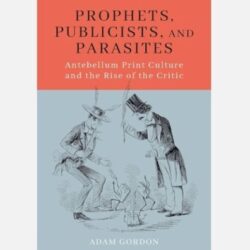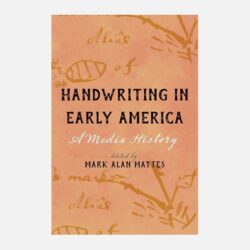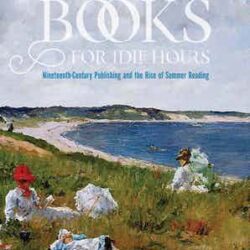Each chapter of Prophets, Publicists, and Parasites centers on a particular nineteenth-century American critic: Ralph Waldo Emerson, Rufus Griswold, Edgar Allan Poe, Margaret Fuller, and Frederick Douglass. The book’s introduction contextualizes the critics’ historical moment as one in which growing nationalism, advances in printing technologies, and a productive economy enabled the emergence of the literary critic as a fully-fledged profession. These changes also encouraged the proliferation of literary criticism in a variety of print forms.
Tag: North America
Mark Alan Mattes, ed. Handwriting in Early America: A Media History.
In 2010, changes to American education standards eliminated the mandate to teach handwriting in public schools. As a result many states dropped the practice in classrooms. Yet in recent years trends have begun to reverse, and now more than 20 states once again include formal cursive instruction (Elizabeth Heubeck, “More States Require Schools to Teach Cursive Writing. Why?” EducationWeek, 16 November 2023). On the first day of 2024, California became one of the latest to do so, but newspapers reflect lingering skepticism. In one opinion piece entitled “Spare the state’s schoolchildren cruel and cursed cursive lessons,” a columnist for the Los Angeles Times concluded, “Cursive is for when you have nothing else to do, or want to live out some steampunk fantasy” (Gustavo Arellano, “Spare the state’s schoolchildren cruel and cursed cursive lessons,” Los Angeles Times, 15 January 2024). It was with this context in mind that I read Handwriting in Early America: A Media History, edited by Mark Alan Mattes. Why does handwriting matter, and how can scholars and educators better explain its significance?
Recchio, Thomas. The Novels of Frances Hodgson Burnett: In “the World of Actual Literature.” New York: Anthem Press, 2020.
Upon closing the final pages of The Novels of Frances Hodgson Burnett In ‘the World of Actual Literature,” I am spellbound. As a reader of Burnett’s children’s works, Recchio brings so many dimensions of her adult writing, thus broadening the scope. Recchio, Professor of English, Emeritus at University of Connecticut, attempts to place the author, best known for her children’s literature such as The Secret Garden and Little Lord Fauntleroy, solidly in the realm of serious women writers of adult fiction. With his extensive academic knowledge and publications on the Victorian literature on the writings of Elizabeth Gaskell, he builds well-documented arguments worth reading within the five chapters of the book.
Tessa Jordan. Feminist Acts: Branching Out Magazine and the Making of Canadian Feminism.
“‘If you wish to write about your children, may we suggest Ladies’ Home Journal? We are a literary magazine’” (156). The above statement, received by American Pulitzer Prize winner Sharon Olds and recorded by Tessa Jordan in Feminist Acts, situates the need feminists felt to create their own magazines in Canada in the 1970s. At the time, women had scant few spaces in which to display their creative output and political opinions, and many women suffered from the assumptions of editors and art critics that their works were simply not as good as those by men. If that was true for women in the dominant print culture of the United States, what were feminists in the Canadian Prairies meant to do? It is against this backdrop that the Canadian feminist periodical Branching Out appeared.
Harrington-Lueker, Donna. Books for Idle Hours: Nineteenth-Century Publishing and the Rise of Summer Reading.
While we may sometimes remember particular “beach reads” and other vacation reading we bring with us, most of the light reading that dominates the myriad summer reading lists isn’t meant to last. Donna Harrington-Lueker has traced the origins of the phenomenon of summer reading in the late-nineteenth-century United States, highlighting the role of ephemerality and entertainment as publishers and reviewers developed the concept of “summer reading,” as well as how tenacious many of the practices of summer reading are, from reading in public spaces to stockpiling books in convenient corners of a hotel room or guest house.





